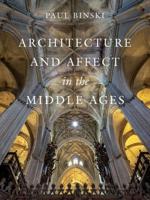Publisher's Synopsis
From the fifteenth century on, after a period of widespread destruction and demolition, India witnessed a resumption of temple patronage and building activity. These 'late' temples, however, are usually overlooked by architectural and art historians, who tend to privilege the earlier phases of Indian architecture and art, the prevailing assumption being that Indiaâs âlateâ temples are unworthy of serious attention. As illustrated in this volume, nothing could be further from the truth. Accompanied by maps, photographs, as well as a selection of building plans, this book is the first wide-ranging account of temple architecture in the 500-year period that coincides with the rule of the sultanates, the Mughals, and the British. Through a meticulous study of over 300 temples from 17 geographical zones, this book shows that, as far as temple architecture is concerned, these years were remarkably creative and vibrant. The temples built during this period display a startling diversity of forms, structural techniques, and aesthetic qualities. Rather than characterizing the appearance of domes, vaults, pointed arches, and other such 'borrowings' as inappropriately 'Christian' or 'Islamic', this volume attempts to understand how such attributes came to be integrated into a Hindu and Jain religious context.











